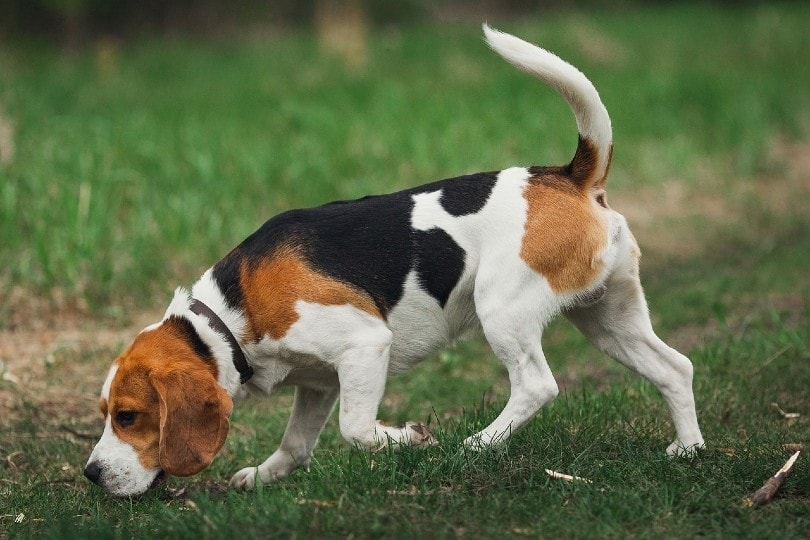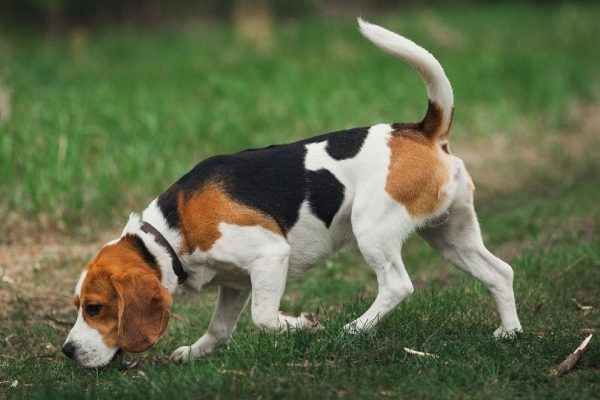Dogs come in different shapes, colors, and sizes—as well as prey drive intensities. Some dogs love to cuddle and sleep most of the day away, while others are constantly on the hunt. It can be hard to snap these dogs out of their fixation once they’ve spotted a small moving animal, while other dogs may not care for the chase at all. Certain dogs have a higher prey drive because of their breeding, but they can also be developed by their environment.
A dog with a high prey drive is challenging if not trained properly, as they can be difficult to control. Although it can never be fully trained out of your dog, their prey drive can be positively redirected, and with the right tips, they can be raised to become obedient and delightful pets.
How Are Dogs with High Prey Drives Classified?
Dogs that stalk, search, chase, snatch, and bite are classified as having a high prey drive. One or two of these behaviors can be stronger in different breeds, but they will typically display varying degrees of all five.
However, it is the job of the owner to redirect this energy into games, toys, or treats, instead of the smaller animals around them. It is important to understand that if you try to completely suppress an instinctive behavior, you will almost always lose. However, if you use positive reinforcement to focus that instinct in a more desirable way, you will have a much greater chance of success, as well as a less frustrated pet.
The 20 Dog Breeds with High Prey Drives
1. Greyhounds
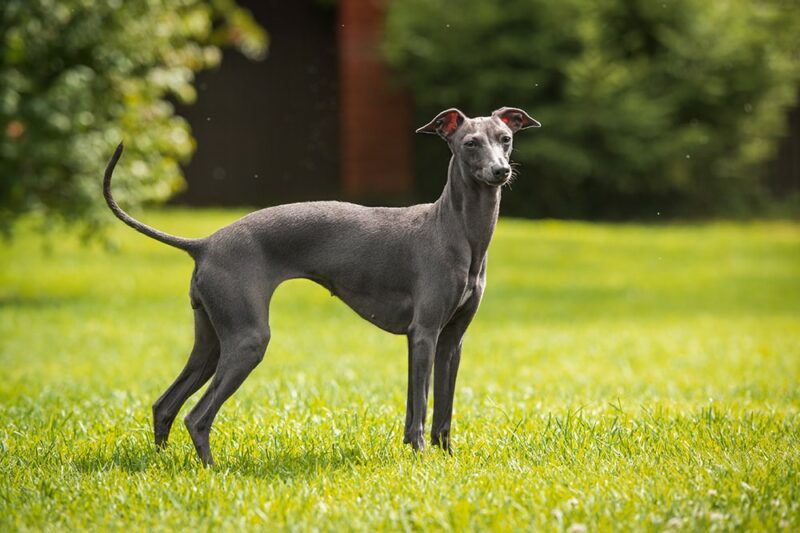
| Lifespan: | 10 to 13 years |
| Height: | 27 to 30 inches |
| Weight: | 60 to 70 pounds |
Known for their speed, these dogs will zoom around your yard after a ball—or a cat. They were bred for hunting, where their high speed and excellent sight were very useful. Although one of the breeds with a high prey drive, these dogs do get on well with other dogs and can be in the ownership of seniors due to their gentle and sweet-natured personalities.
However, early socialization with small animals and children is a must for this breed.
2. Border Collies
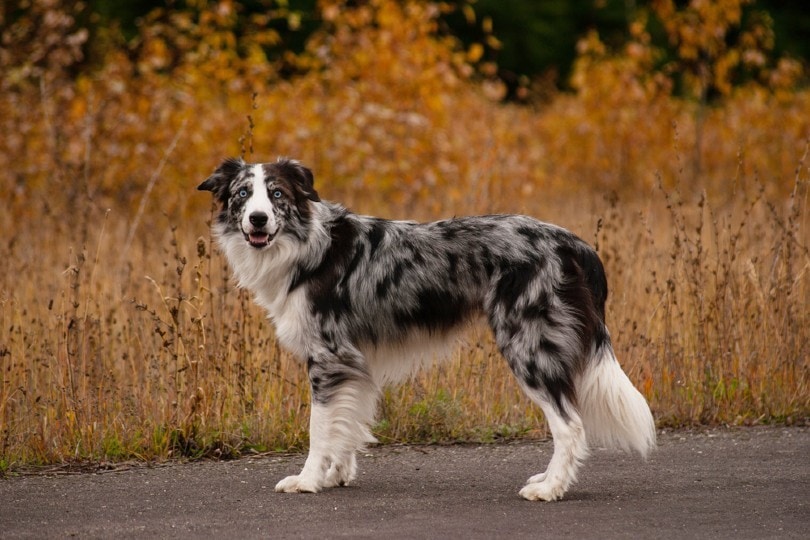
| Lifespan: | 12 to 15 years |
| Height: | 18 to 22 inches |
| Weight: | 30 to 55 pounds |
These intelligent sheepdogs are incredible herders, and they know how to control a flock of sheep with their eyes and movements. They love to work and do well on a farm where they have the freedom to run and release all their energy. However, farm life isn’t a requirement to owning this breed as long as you provide them with around 2 hours of activity each day.
Due to their intense herding instincts, they may try to herd children and small animals in the home. Thankfully, this behavior can be trained out of them by a strong leader and enriching lifestyle. Allowing them to run with other dogs can be a great way for them to let off steam, and activities like flyball are a fantastic way to keep their bodies fit and minds active.
3. Cocker Spaniels

| Lifespan: | 10 to 14 years |
| Height: | 13.5 to 15.5 inches |
| Weight: | 20 to 30 pounds |
Those floppy ears, big eyes, and stunning coats are a few of the many stunning features of a Cocker Spaniel. These dogs are great companions that are sporty enough to eagerly participate in any activity or adventure. They were created for hunting but are one of the most popular breeds in America.
These dogs are water lovers, too, so swimming is an excellent activity to release some of their energy. If integrated with cats and other pets from a young age, they’re able to live harmoniously with them. These dogs love to follow their nose, so teaching them to “hunt” for items at home, or engaging in scent training, are some easy ways to let them use their instincts.
4. English Pointer
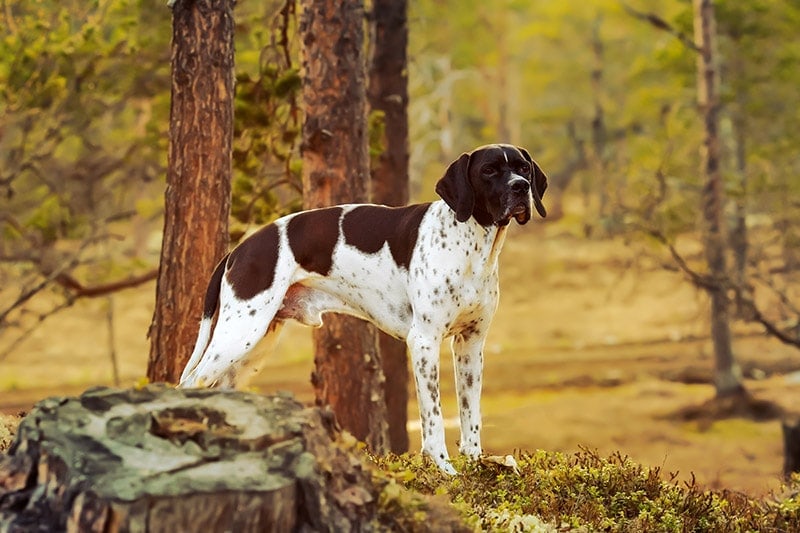
| Lifespan: | 12 to 17 years |
| Height: | 23 to 28 inches |
| Weight: | 45 to 75 pounds |
The English Pointer is an intelligent breed that is friendly and playful. They are highly active, speedy, and need a lot of exercise, making them one of the best dogs for runners, cyclists, and hikers. These dogs were bred for hunting, and as their name suggests, they would point hunters in the direction of wild game. Because of their instinct to chase and grab smaller animals, care must be taken when they share a home with smaller pets.
These dogs are highly trainable but require a strong leader and consistency, as their prey drive can often make them disinterested in training.
5. Irish Setter

| Lifespan: | 12 to 15 years |
| Height: | 25 to 27 inches |
| Weight: | 60 to 70 pounds |
Although developed as gun dogs, Irish Setters are great family dogs. They are loyal, intelligent, and sweet-tempered. These dogs are energetic enough to keep up with children but are gentle enough around the elderly. However, the Irish Setter is energetic and big, so supervision is required around little children. These beautiful dogs do enjoy a good chase, but they are often content chasing toys. If raised among smaller dogs and cats, they will generally view them as family, not prey.
These dogs have stunning coats that can be seen in red, mahogany, and chestnut. They need moderate grooming and a lot of exercise. These dogs don’t do well in apartments or small homes as they enjoy a lot of space to move about.
6. Beagles
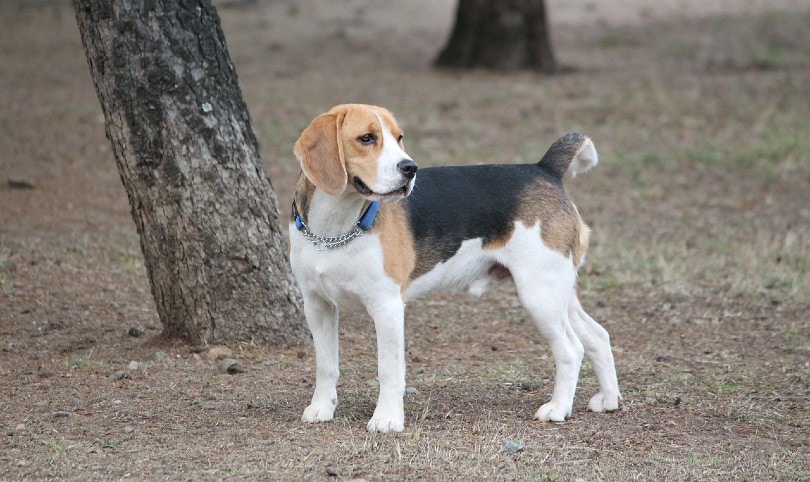
| Lifespan: | 10 to 15 years |
| Height: | 13 to 15 inches |
| Weight: | 20 to 30 pounds |
Beagles love homes with other dogs, but their high prey drive makes them a concern around smaller pets like hamsters or guinea pigs. They’re great family dogs, are loveable, and make great companions. They have compact bodies that are suitable for apartments, but they do tend to howl, which may not go down favorably with the neighbors. Regardless of your living space, Beagles need frequent walks as they are an active breed that was bred for hunting, and will do well with scent training.
Beagles come in black, red, and white colors, as well as a few other variations and patterns. They love to eat and are prone to obesity. They’re also prone to joint, eye, and heart problems, so frequent checkups at the vet are necessary.
7. Australian Shepherds
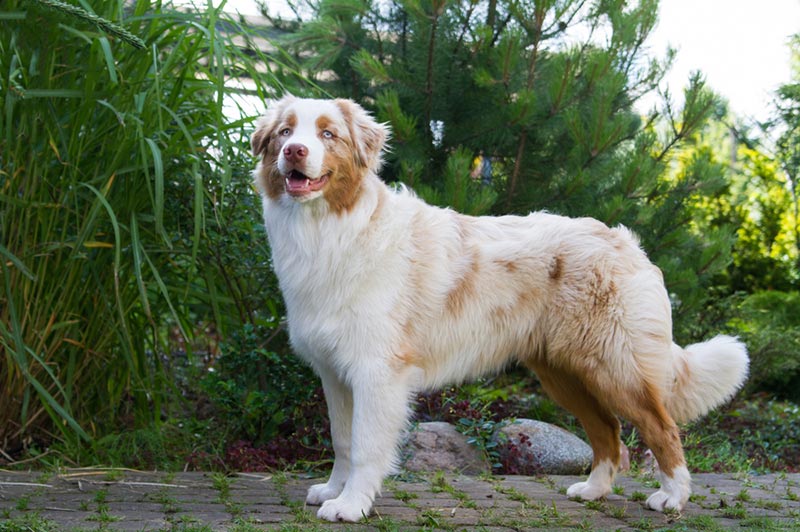
| Lifespan: | 12 to 15 years |
| Height: | 18 to 23 inches |
| Weight: | 40 to 65 pounds |
Like the Border Collie, Australian Shepherds are born to herd, and are excellent at it. They are working dogs that save farmers a lot of time and effort by rounding up their sheep and cattle, and are commonly used as police dogs because they are highly trainable and intelligent. They are agile and competitive and, when trained well, perform brilliantly in obedience dog competitions.
These dogs do well on ranches but also do fine in homes with fenced-in yards. However, they need to be exercised and kept busy because dogs that don’t receive enough mental and physical stimulation will act up and become challenging to live with.
8. Afghan Hounds

| Lifespan: | 12 to 18 years |
| Height: | 25 to 27 inches |
| Weight: | 50 to 60 pounds |
Although Afghan Hounds look prim and proper, these dogs can be delightfully silly and playful. Apart from their long, stunning coats, these dogs have long faces and flowy ears.
Afghan Hounds were bred for coursing and hunting, where they would spot prey and hunt it down. Although beneficial in the forest and other hunting spots, this behavior is unhelpful on causal walks. Unless highly trained, Afghan Hounds should remain on the leash to prevent them from running off after other animals.
Apart from their high energy needs, their coat also requires a lot of maintenance with brushings at least once a day to prevent tangles and frequent baths.
9. Alaskan Malamutes
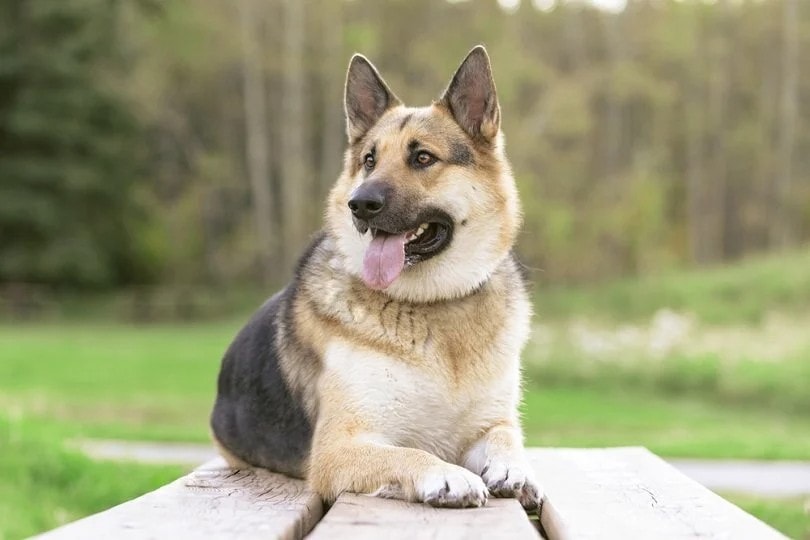
| Lifespan: | 10 to 14 years |
| Height: | 23 to 25 inches |
| Weight: | 75 to 85 pounds |
The Alaskan Malamute has a similar appearance to a wolf, but is domesticated. They were bred to pull heavy sleds and have the endurance and energy for it. These dogs are hard workers that need a leader, which must be their owner. They are strong-willed, stubborn, and highly intelligent. If they don’t see their owner as a strong leader, they will assume the role and become difficult to manage.
The Malamute needs space to run and play, and requires at least one hour of exercise every day. Due to their strong personalities, it is a good idea to take them to puppy training. They are not a good choice for inexperienced dog owners, but in the right home, can be very loving, loyal pets. It is vital to raise them to respect children and small pets, as they can be overly boisterous if strict guidelines are not enforced.
10. Basenjis
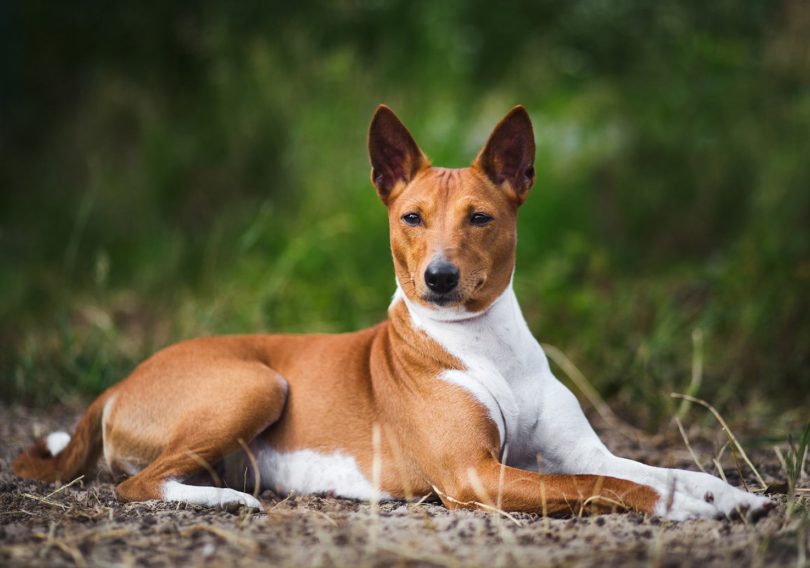
| Lifespan: | 13 to 14 years |
| Height: | 16 to 17 inches |
| Weight: | 22 to 24 pounds |
The Basenji is an African dog that has been around for centuries. Evidence of these dogs goes as far back as 6000 BCE in the form of cave paintings. These dogs are small, but high-energy. They are intelligent, almost to a fault, because they get bored easily, which can quickly result in disobedience. They enjoy playtime and long walks, but should be kept on a leash as they are scent-sensitive and will often ignore their owner’s call if they pick up the smell of something more interesting.
Although loving, Basenjis aren’t great with young children because they find them too unpredictable, but early socialization can help with this.
11. Bullmastiffs
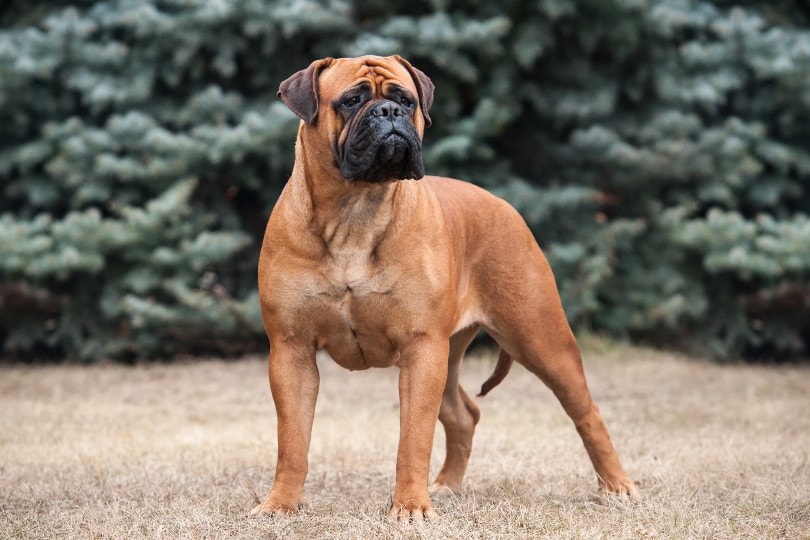
| Lifespan: | 7 to 9 years |
| Height: | 24 to 27 inches |
| Weight: | 100 to 130 pounds |
Bullmastiffs are a solid, giant breed that can look quite intimidating. However, these dogs are generally quite docile and loving, and will often fit in well in households with children and other pets. Although large in structure, Bullmastiffs are gentle towards family members of all ages, but due to their large size, they require strict training and socialization.
Bred as guard dogs and to pursue poachers, they can be a bit boisterous and get carried away if they are allowed to. They’re typically calm dogs but do require a fair amount of exercise between their naps on the couch. They have a high prey drive and can be hard to control when they spot something due to their large size, so early training is essential.
12. Doberman Pinschers
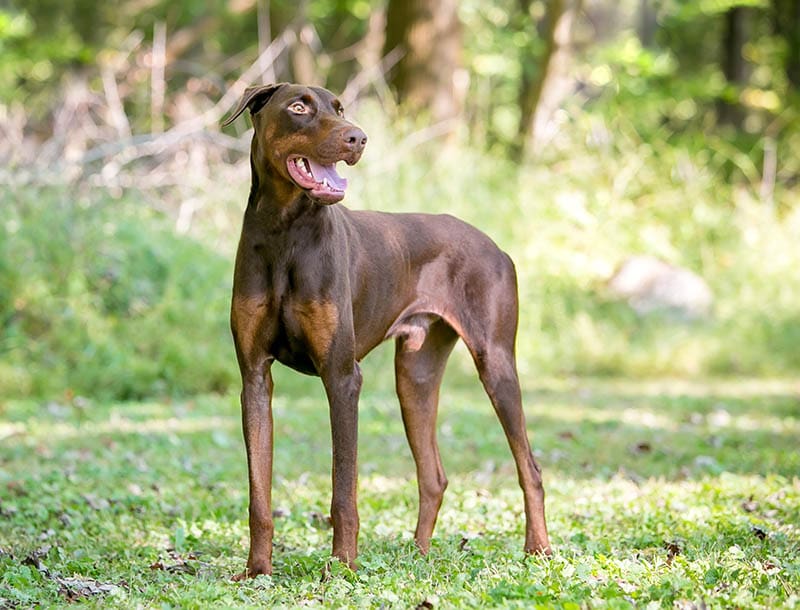
| Lifespan: | 10 to 12 years |
| Height: | 24 to 28 inches |
| Weight: | 60 to 100 pounds |
Doberman Pinschers look tough and scary and are often used for police work, but they’re also loyal, curious, and affectionate. They need a lot of mental stimulation and exercise to avoid unwanted, destructive behavior. They do better in homes without small animals, because they may hunt, chase, and bite, even though their intention may not be to harm.
These dogs do best in families and active homes. They don’t do well on their own for long periods, so people who work long hours or can’t give their dog a lot of attention aren’t suitable for this breed. Doberman Pinschers do well with other dogs, are patient with young children, but they do need strong leadership and strict training.
13. Jack Russell Terriers

| Lifespan: | 12 to 14 years |
| Height: | 10 to 12 inches |
| Weight: | 9 to 15 pounds |
Although small, Jack Russell Terriers are full of energy and tireless. They have big personalities and are eager to please their owners. They’re silly but confident, and aren’t afraid to challenge a dog twice their size. They thrive off attention and enjoy retrieving games such as fetch. They also chew a lot, especially as puppies, so appropriate toys for sharp little teeth are necessary.
Jack Russell Terriers get on well with other dogs and can live in homes with cats, although some will be forever chasing and barking at them. Bred to chase rats and other small prey, they are not suitable for homes with small pets like rabbits, guinea pigs etc.
These lively terriers can get carried away, and can be a bit too much for young children.
14. Whippets
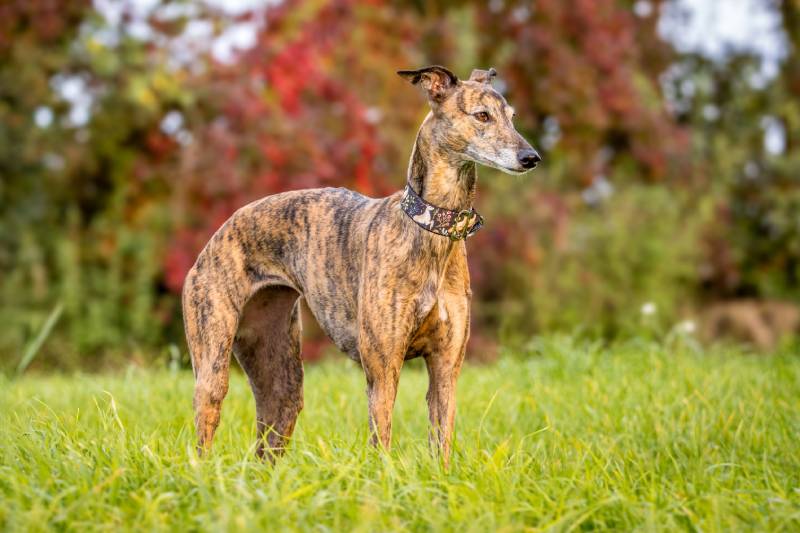
| Lifespan: | 12 to 15 years |
| Height: | 18 to 22 inches |
| Weight: | 25 to 40 pounds |
Similar in appearance to Greyhounds, Whippets are also incredibly fast and athletic. They need a yard with a fence to keep them safe, as they will run off, and should always be walked on a leash. They enjoy sprinting games and will happily pursue a flying disc or ball. They do well in active families and are great running companions.
Whippets are also goofy, playful, and sweet and enjoy a good snuggle with their owners. They get cold easily and can wear pet jackets for extra warmth as their coats are short and smooth, and their bodies are slim.
They are generally happy in the company of other dogs and cats, but due to their instinct to chase, may not be ideal for sharing a home with small pets.
15. Weimaraners

| Lifespan: | 10 to 13 years |
| Height: | 23 to 27 inches |
| Weight: | 55 to 90 pounds |
Known as the “Gray Ghost,” Weimaraners have a sleek and velvety blue or gray coat and striking blueish eyes. These dogs were created for hunting bears and other big game and still have a fearless nature because of it. They are the result of crossbreeding Bloodhounds with a few German and French hunting dogs. They also perform well as pointers and retrievers.
Weimaraners love living indoors with their family members but do require a lot of mental and physical stimulation to keep their intelligent brains busy. A bored Weimaraner is a problematic dog that will bark excessively, so owners need to get them occupied or moving.
16. Rhodesian Ridgebacks

| Lifespan: | 10 to 12 years |
| Height: | 24 to 27 inches |
| Weight: | 70 to 85 pounds |
The Rhodesian Ridgeback is a powerful and brave dog that was bred to track and bring down wild animals, such as lions and antelope. Although a true hunter, these dogs are also sweet and gentle dogs that love their families. As for their name, Rhodesian Ridgebacks were named after their place of origin, Rhodesia (today called Zimbabwe), and after the stripe of backward hair that lines their backs.
These dogs are alert and strong-willed. They’re also athletes that need firm training, and a minimum of 45 minutes of activity, through exercise and play, per day. They vary in color from brown to red and have minimal grooming needs. They love being a part of a pack and get on well with other dogs and cats.
17. Samoyeds

| Lifespan: | 12 to 14 years |
| Height: | 19 to 23.5 inches |
| Weight: | 35 to 65 pounds |
The stunning Samoyed stands out because of their thick, fluffy, white coats and noticeable smiles. These cuddly dogs are social and thrive when given a lot of attention. They like meeting new people and dogs and are eager to play. They do well in the cold as they were developed to pull sleds in the snow—and have an excellent work ethic. They require firm training, which should start at a young age.
Samoyeds are vocal dogs that will communicate their needs to you. They don’t like to be confined, so a fenced-in yard is ideal for them. Frequent exercise will keep these dogs from becoming destructive.
18. Salukis
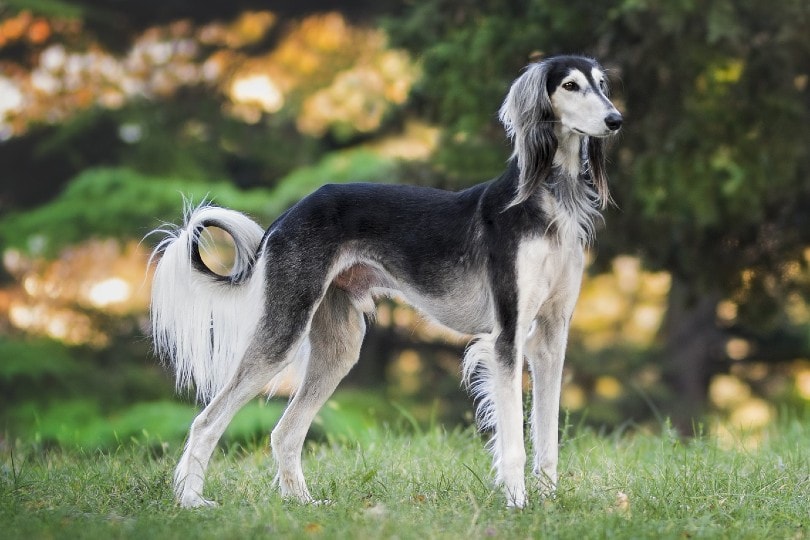
| Lifespan: | 10 to 17 years |
| Height: | 23 to 28 inches |
| Weight: | 40 to 65 pounds |
There is so much history around Salukis, as they are an ancient hunting breed. These dogs were held in high esteem by the Egyptians, who would mummify them so that they could enter into the afterlife alongside the Egyptian Pharaohs. Salukis were bred to hunt down smaller animals to provide their owners with food. They are tall, slim, and have long hair.
Salukis love their families but don’t like strangers or children. They do best with active couples or singles, who can devote their time to them and take them on hikes and runs. They can live with cats, provided they have been safely introduced.
Tips for Raising Dogs with High Prey Drives
There are varying degrees of prey drive intensity between different breeds of dogs, with some being able to release that instinctual behavior through chasing and retrieving games, and others requiring a bit more intensive activities.
- Start training early and get your puppy well-socialized before their high prey drive kicks in.
- Train your dog to have a strong recall so that they know to come to you when called—even if they’ve spotted a rabbit or squirrel. Also, train them to respond to commands.
- Play impulse control games and predation substitute games.
- Tire your dog out by doing various activities with them throughout the day, such as swimming, running, hiking, having them run next to you on a leash while you cycle, and through games such as fetch, tug-of-war, and hide-and-seek.
- Give puppies lots of different toys to play with.
- Avoid reprimanding your dog and focus more on getting their attention with treats before they would typically respond to “prey.” You’ll need to monitor their behavior and reactions to know when the best time is for you to step in.
- Keep your dog in a fenced yard to prevent them from running off.
- Use a leash when taking them on walks so that you have control over your dog.
- Never leave your dog unsupervised with children or smaller animals.
Can Dogs with High Prey Drives Live with Cats?
Most dogs with high prey drives can live with cats if they’re introduced to them slowly and from a young age. Unfortunately, if you have an older dog with a high prey drive, it isn’t recommended that you bring a new cat into the home, as it may not be a safe environment for them. However, it does depend on your dog, their personality, and the intensity of their prey drive.
When introducing your dog to a new cat, make sure to take the process nice and slow, as rushing through it can be detrimental. First, keep your dog and cat separated by a closed door so that they can familiarize themselves with each other’s smell. Then, start to feed each pet near each other but not in eyesight. This will help them associate good things with the other pet’s smell.
After a period of doing this, you can begin face-to-face interactions in a neutral area. Keep your dog on their leash and keep the interactions short but frequent. Once they get used to each other from daily exposure, you can let go of your dog’s leash and allow them to interact freely.
The thing to be aware of is that dogs with a strong instinct to chase and grab can easily kill a cat, or other small animal, without actually intending to, so it is important not to assume that a docile dog is 100% harmless. If they want to chase a cat, assume that they might one day catch it.
Conclusion
Dogs with high prey drives need a lot of exercise and mental stimulation as this will prevent destructive and problematic behavior. Although dogs with high prey drives shouldn’t be left unsupervised with smaller pets, they tend to live harmoniously with cats when introduced slowly and from a young age. Training from puppyhood and strong recall are essential for these types of dogs.
Featured Image Credit: olginaa84, Pixabay
Contents
- How Are Dogs with High Prey Drives Classified?
- The 20 Dog Breeds with High Prey Drives
- 1. Greyhounds
- 2. Border Collies
- 3. Cocker Spaniels
- 4. English Pointer
- 5. Irish Setter
- 6. Beagles
- 7. Australian Shepherds
- 8. Afghan Hounds
- 9. Alaskan Malamutes
- 10. Basenjis
- 11. Bullmastiffs
- 12. Doberman Pinschers
- 13. Jack Russell Terriers
- 14. Whippets
- 15. Weimaraners
- 16. Rhodesian Ridgebacks
- 17. Samoyeds
- 18. Salukis
- Tips for Raising Dogs with High Prey Drives
- Can Dogs with High Prey Drives Live with Cats?
- Conclusion

